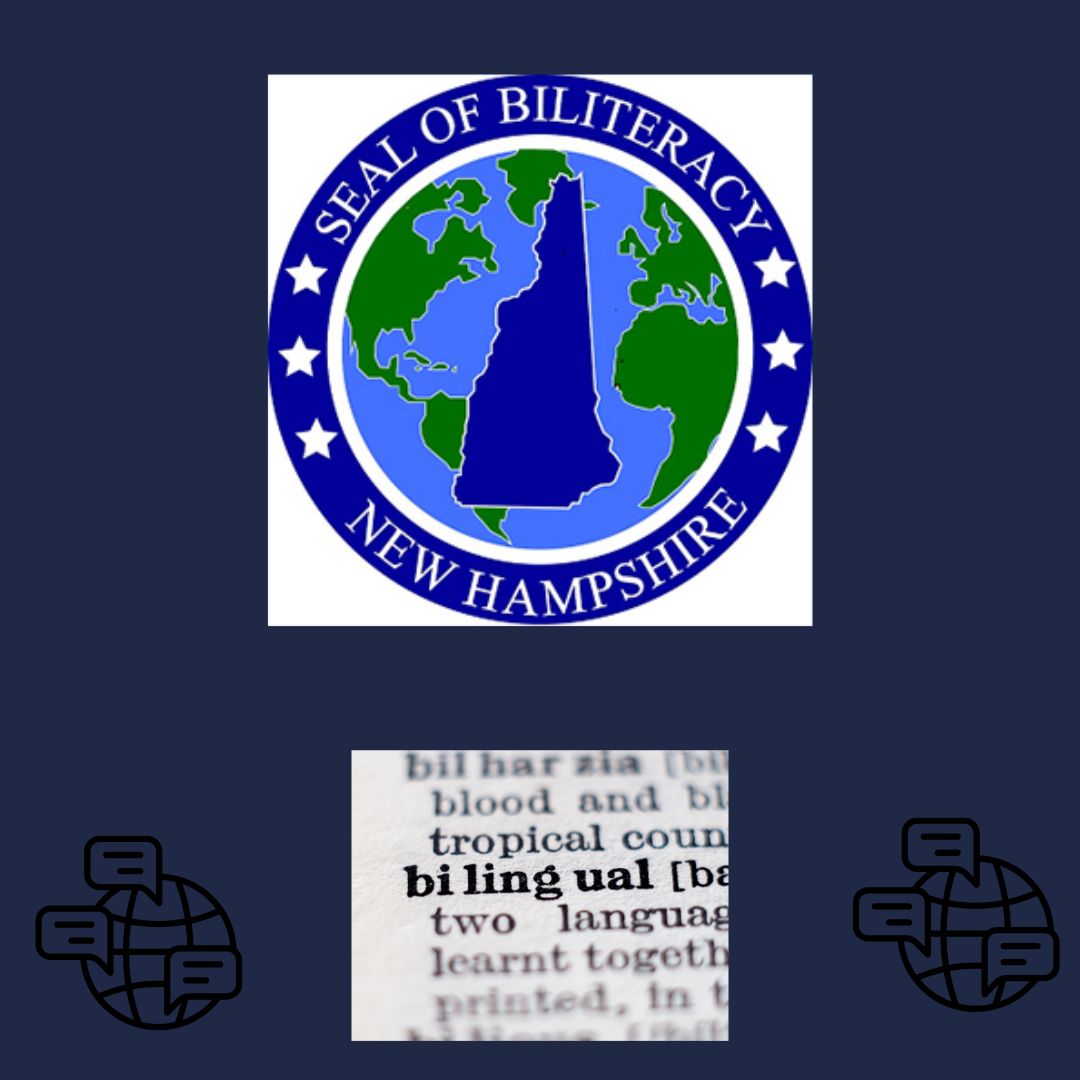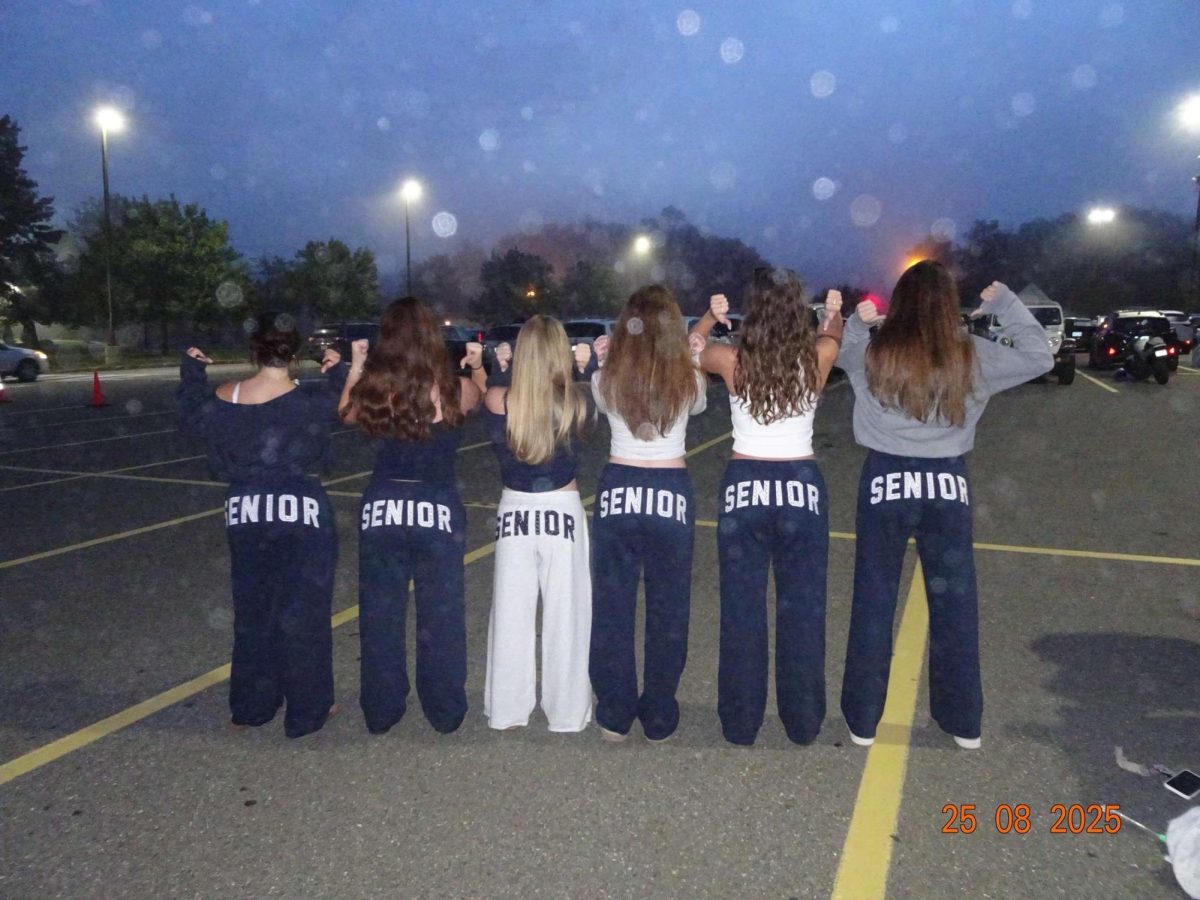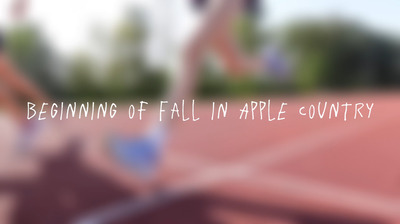Science teacher Mrs. Simpson came up with the idea of a forensic science class while mowing her lawn, which she said is a good time for her to think.
Simpson felt LHS didn’t have any science electives that were open to a variety of grades, as chemistry and physics are only available to upperclassmen. Due to the popularity of crime shows airing across different networks and consuming the airwaves, Simpson decided forensics would be topical and interesting to students.
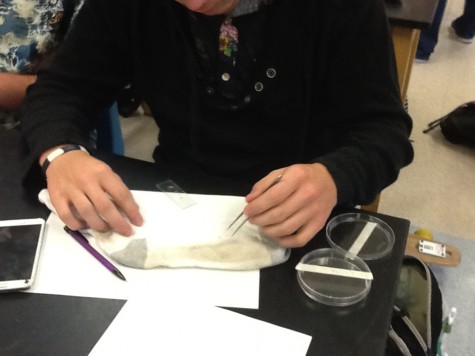
After wearing a pair of socks around their house for homework, students collect fibers and hairs from their sock. This activity is done to teach students about fiber evidence and how to collect it.
“There are a lot of things that aren’t accurate on the shows and it’s cool to see what things are like in real life,” said sophomore Danika Dixon, who is currently taking forensic science and is a fan of the crime show Psych.
Along with giving an accurate look into real life crime solving, the forensic science class strives to improve a student’s skills in deductive reasoning, observing a crime scene, and analyzing evidence. The class relies on different methods of teaching rather than lectures and having students memorize textbook material.
“I try to set up so it’s less of me demonstrating and more of you doing it,” Simpson said.
“Logic grid” and “spot the difference” puzzles, mock crime scenes, examinations of evidence, and tests of memorization are all used to teach students the essentials of forensics.
“This class is really interactive and rarely boring,” said senior Olivia Gagan. “Mrs. Simpson really knows how to teach a fun class.”
Sophomore Josh Ryan particularly enjoyed the “deadly picnic” activity in which students were asked to take notes and examine a mock crime scene set up with a mannequin.
“I didn’t even notice some of the little things laid out next to the mannequin,” Ryan said.
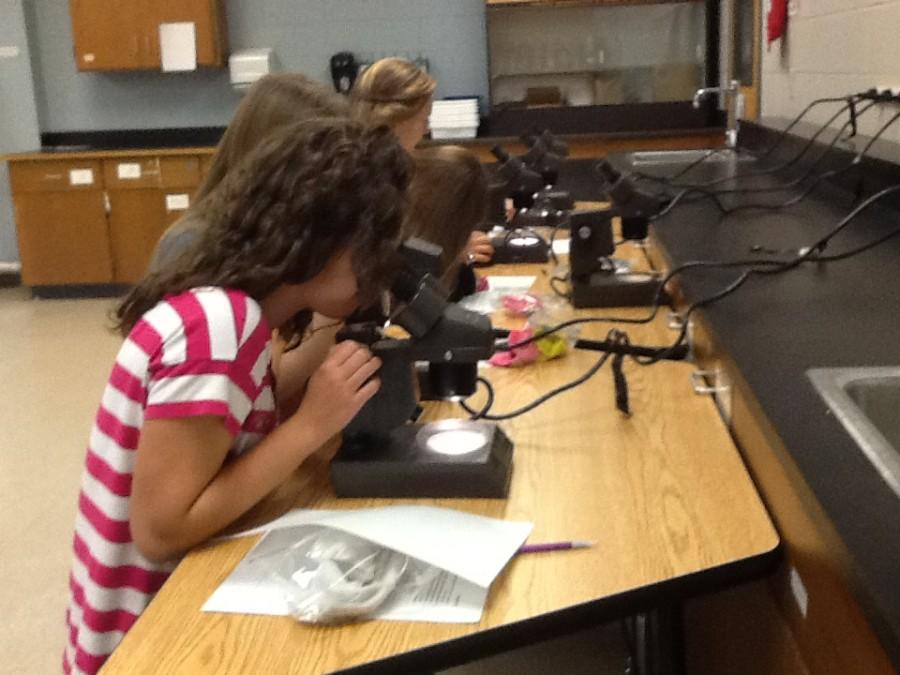
After collecting fibers and hairs from their socks, students look at their findings underneath a microscope.
Forensics science may use some unique methods of teaching but it isn’t all fun and games (literally). Forensics is still a science class. It is the job of forensic scientists to apply aspects of physics, chemistry, and biology to provide evidence necessary for solving a crime scene. DNA testing is part of chemistry and biology, and physics is involved in ballistics.
“I talked with real forensic scientists and they suggested that people going into the career have a strong biology and chemistry knowledge,” Simpson said.
The reality of forensic science might be a far cry from the excitement that is displayed on TV. However, the idea that science can bring dangerous criminals to justice and save innocent people from a life in prison is exciting enough on its own. The forensic science class is a first step in the crime solving world for a new group of investigators.
“I am going into the criminal justice field and I knew this would help me out when the time comes,” senior Tim David said.
According to Simpson, all students enrolled in forensic science have a great deal of excitement in store for them in the coming months as the class extends off of the basics of crime solving.
“The best is yet to come,” Simpson said. “I’m really happy [my students] are liking what I’m doing now, when I know what’s coming.”

Students dusting for fingerprints during the forensic science class’s in house field trip. Guest speaker and patrol officer Lt. Kester, showed students how to find fingerprints on objects and then allowed students to practice using their own fingerprints.




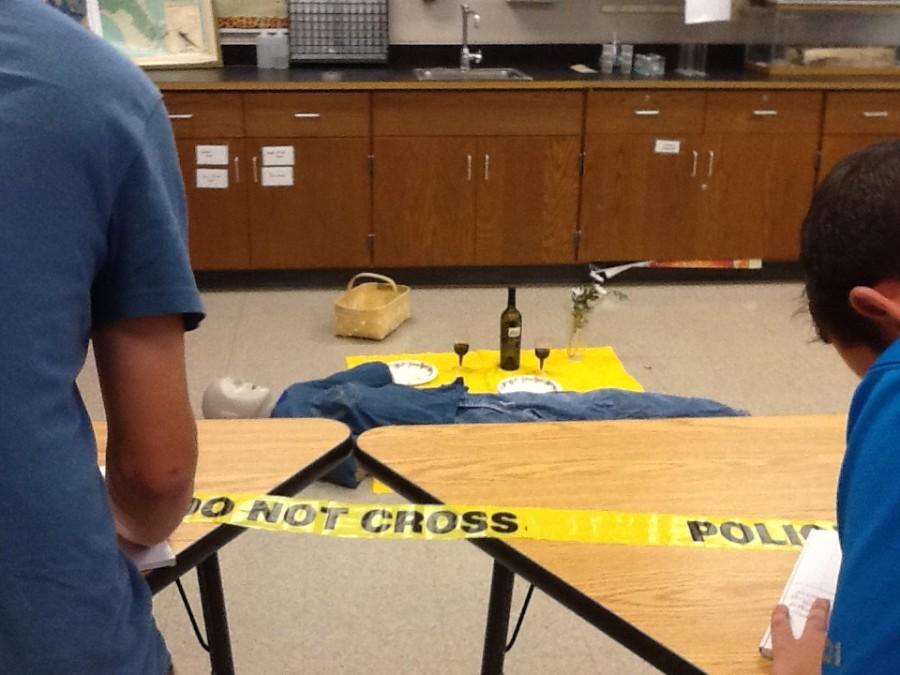
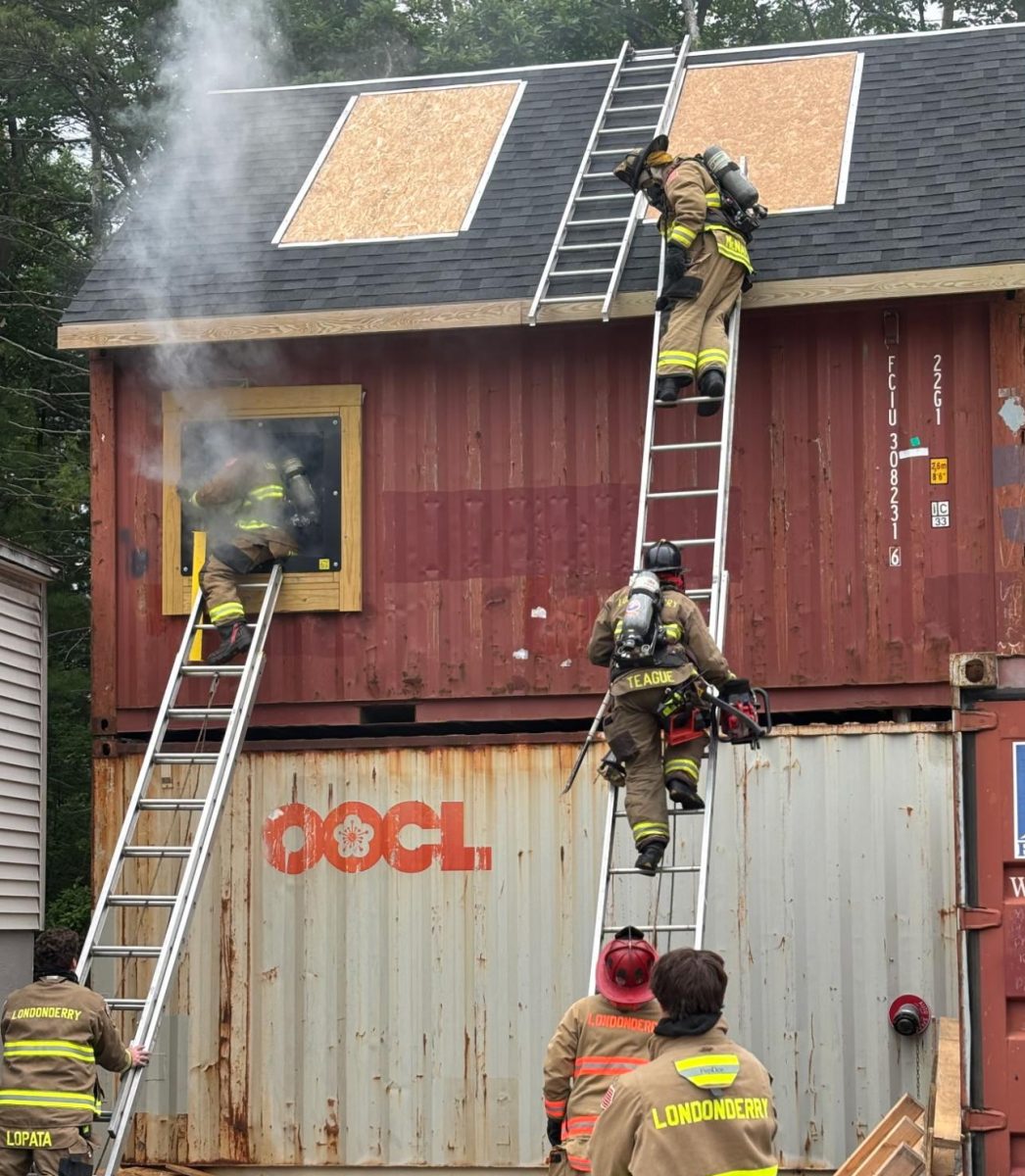
![Carol Ritchie helps one of her students through a computer assignment during A period. Ritchie has taught students basic English with activities to help them get a better grasp of concepts. problem-solving skills in her classroom. “I try to make the class fun and find [activities] that interest them,” Ritchie said.A banner of the world map and flags hangs near ESOL teacher Ms. Ritchie’s desk. (Image made in Canva by Kelsey Sweet).](https://www.lancerspiritonline.com/wp-content/uploads/2025/06/Light-Green-Featured-Jewelry-Instagram-Post.jpg)



